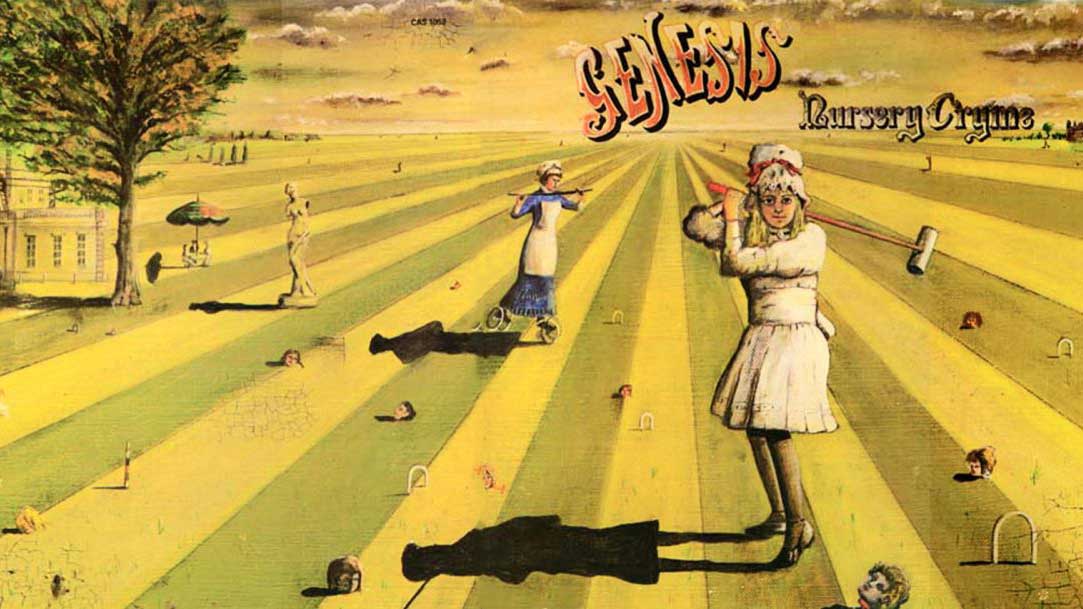Released in 1971, Nursery Cryme was Genesis’ third studio album, but the first to feature new guitarist Steve Hackett and drummer Phil Collins. Easily the band’s most assured work to date, it featured three bona fide classics in The Musical Box, Return Of The Giant Hogweed and Fountain Of Salmacis, all of which would prove live favourites for some time. It was the band’s most successful album to date, cracking the UK Top 40.
Paul Whitehead’s striking cover painting, picking up on the Victorian theme of many of the songs, set the tone for the band’s album covers for the remainder of the 70s.

How did you meet the band?
“Well, I had an art exhibition in London, and either Peter Gabriel came to see it, or the band’s producer John Anthony did. I can’t now recall which way round it was. But as a result I ended up being asked to do the cover for Trespass, and it went from there.”
How did you come up with the idea?
“The album seemed to me to have a very Victorian feel to it. And that’s what I pursued. The guys liked the idea, and told me to run with it.”
Had you heard the music beforehand (and what did you think)?
“I always insist on hearing as much music as I can before doing the artwork. I have to get a feel for the way it all sounds. I was given the lyrics beforehand, and heard some of the music, although it wasn’t finished at that stage. But I really liked what I got played. They were developing their own style, and sounded like nothing else around at the time.”

What was the concept?
“One of the tracks I certainly heard was The Musical Box, and it was from there that I came up with the idea of using an Alice In Wonderland theme for the cover. It fitted in with the old England lyrical approach. But the problem we had was that the band wanted it to look like an old painting.
“When I showed them my original painting, they all said that it didn’t look old enough. They wanted it to look like it came from the Victorian era. So, I varnished the canvas with old honey, and that did the trick. It now had that 19th Century feel to it. But the problem was that when this was sent off to be printed, the first proof which came back had given the painting a yellow hue, which wasn’t supposed to be there. However, we all liked it so much that it was decided to stick with this.”
- The Managers That Built Prog: Gail Colson - the woman behind Peter Gabriel
- Genesis: Foxtrot Was Where We First Started To Become Significant
- Q&A: Tony Banks
- Jon Anderson: Phil Collins scuppered my solo career
What was the reaction?
“Well, the band really liked it. They thought it captured the spirit of the music. And Charisma Records were also very pleased with what they saw, as were the management. But the fan reaction was interesting. There were people who were genuinely shocked at what they saw on the cover.
"You can imagine what it was like in those days for the unsuspecting record browser. They would be going through the racks in their local record store when they’d be confronted by this image! It created quite a stir back then. Of course, this was before the slasher movies became popular. Now, the cover wouldn’t get that sort of reaction at all. But in 1971, it was really seen as being controversial.
"All those heads on a croquet lawn. It’s odd, because at the time I never painted this for any other reason than to represent the music. I had no clue it would be so contentious.”

